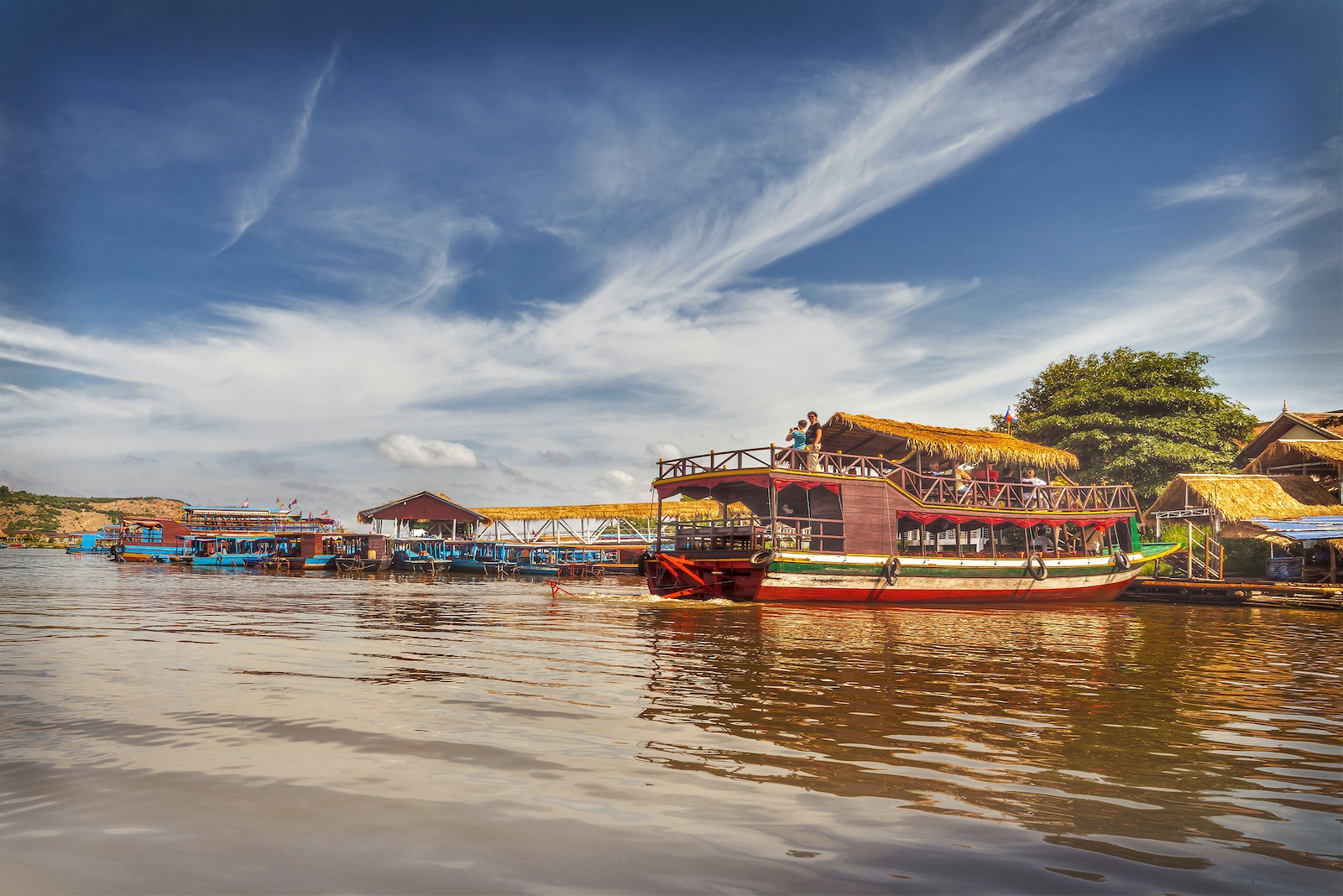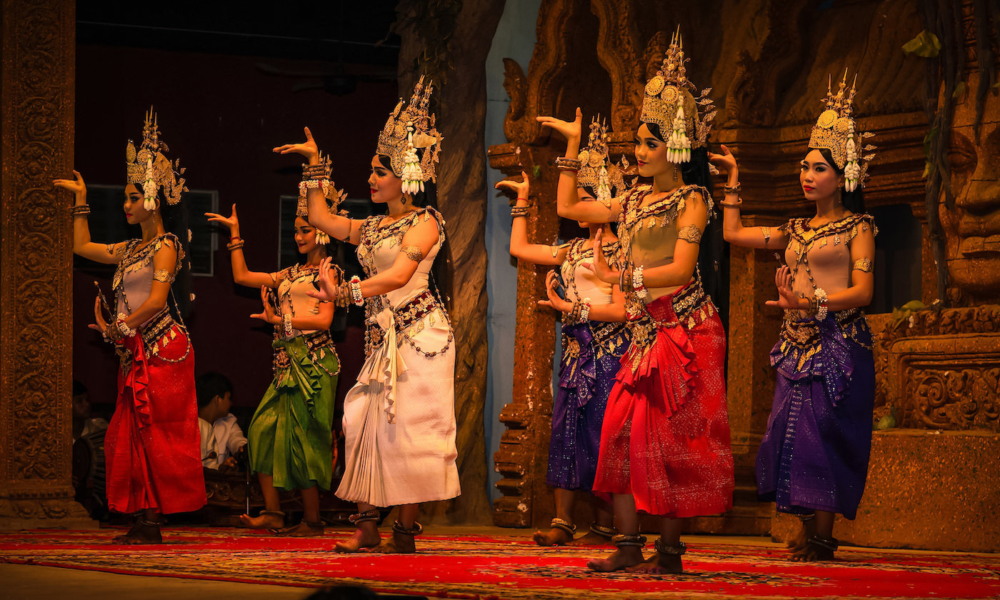And The River Flows Backwards!
Along the spine of the Kingdom of Cambodia runs an unique water system that stretches from North East to South West, from the old Khmer capital of Angkor Thom to the present capital Phnom. It begins with the Tonle Sap Lake, the largest fresh water lake in South East Asia, which drains through the Tonle Sap river to enter the mighty Mekong, the life blood of South East Asia.
In the dry season, the Tonle Sap river flows southwards like any normal river. But come the rains the Mekong river floods, driving massive amounts of fresh water up river south to north into the lake. It is then that the Tonle Sap flows in reverse gear! This cycle of alternate draining and flooding of the lake and the Tonle Sap river going into reverse, happens virtually every year!
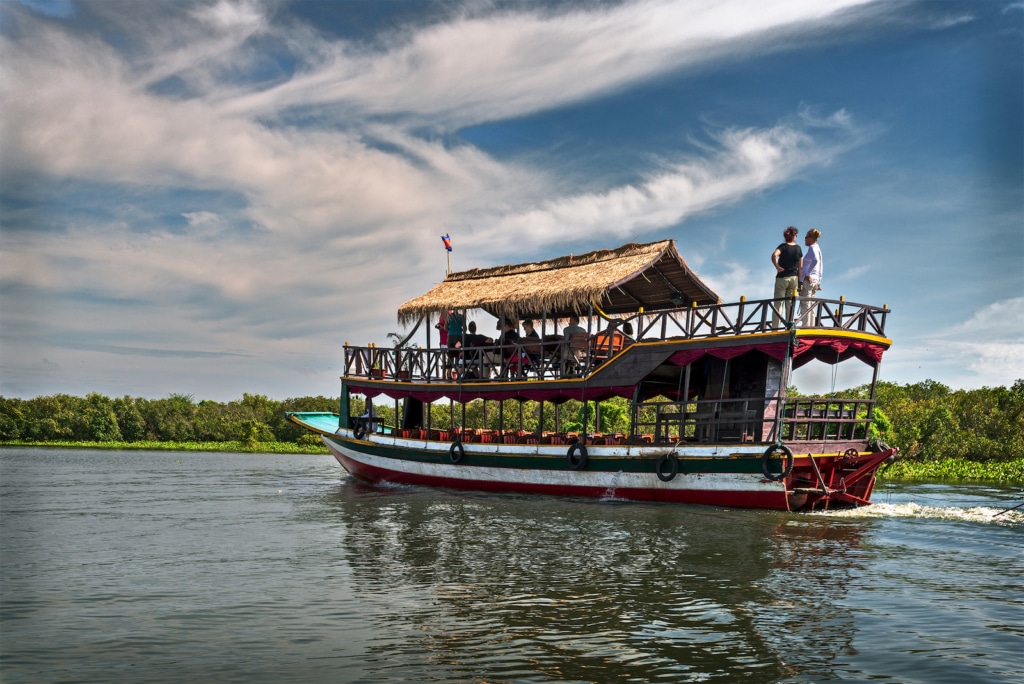
The Beating Heart of Cambodia
The hydro-system of the lake, the river and the Mekong is the slowly beating heart of Cambodia. Just like the human heart that pumps blood around the human body, the Tonle Sap system collects and then pumps water in and out of Cambodia.
Every time the floods occur, the lake grows almost 10 times its size occupying as much as 10,000 square miles and rising some 30 feet in depth before shrinking to about 1,000 square miles and just about 3 feet in depth in the dry season. Every time the waters recede, they leave behind a nutrient rich soil deposit creating an ecosystem that supports a very high variety and quantity of species in the wetlands surrounding the lake. Each year, about 300,000 tons of fish are caught from the lake and the river that feeds half of Cambodia, providing about 60% of their protein intake.
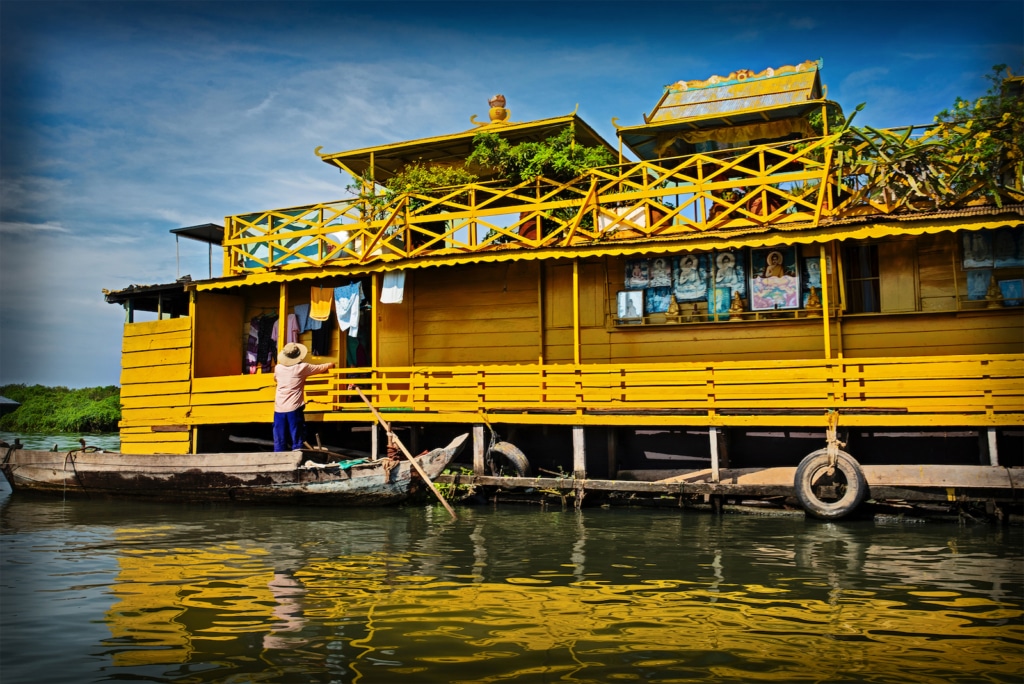
The Lake People
Given the diversity and abundance life around the Tonle Sap Lake, it is no surprise that it is home to some special who can be broadly of two types, the Boat people and the Stilt people. Both of them cope with the rising and falling of the lake level in their own way.
The Boat people, mostly of Vietnamese origin who fled to Cambodia after the fall of Saigon; live in a community of floating boats that consist of places worship, homes, schools and even floating shops and restaurants. They use boats to move around and are usually self-sustaining. Many are not accepted as Cambodian citizen and hence, have no right to own land and build houses.
During the Khmer Rouge regime, many Vietnamese were killed here. They eke out a living from fishing, boat building and the tourist trade.
The Stilt people are mostly of Cambodian origin who own land close to the lake shores. To account for the massive rise and fall of the lake level, their houses are built on high stilts to keep flood waters out. During dry season, when the waters recede, the stilts make the houses look like towering cranes soaring overhead.
The Stilt People live further away from Seam Reap, with less tourist traffic. The houses are open to provide cooling, so a visitor can see the living rooms, with unique family designs. Both Buddhist and Christian communities live here together in harmony.
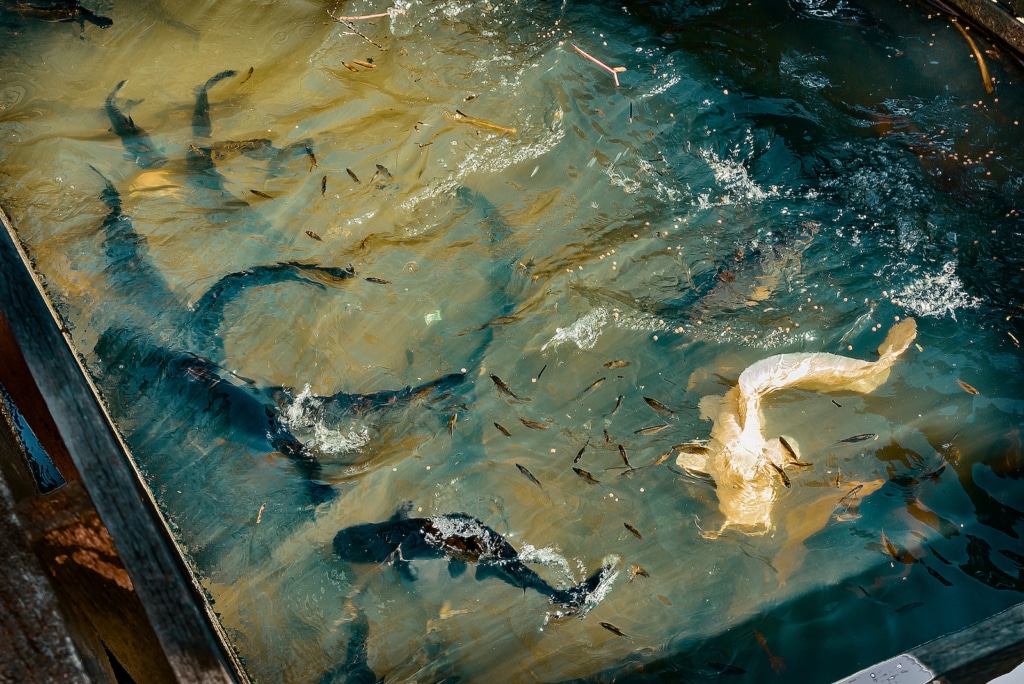
Crocs for Lunch
In some restaurants in Seam Reap, close to the Tonle Sap lake, barbequed food is served, cooked right at the customers' table on portable grills. The fare includes vegetables, chicken, pork, beef and crocodile meat. Croc meat is like a cross between chicken and beef. Because of very little fat in the meat, it is dry and chewy, a rather acquired taste!
The crocs are raised in special farms are Siamese in origin. Much smaller than the sweet water Nile crocodiles and less than half the size of the salt water monsters in Australia, the Siamese crocks are all but extinct in the wild due to illegal hunting.
The crocodile farms supply crock skins for high fashion leather accessories in countries like Italy. While the croc farmer gets the best price when the crocs are three years old, they are usually exported as 2 or 3 month babies to save the cost of raising them.
Some crocs are raised till they are 3 years old for skin and meat. Many farms are actually part of a floating restaurant that regularly attract tourists. In addition to crocs, there are floating tanks that contain the huge Mekong catfish including the rare albino ones. In addition to providing tours, the floating farms also sell croc leather products and dried croc meat and catfish.
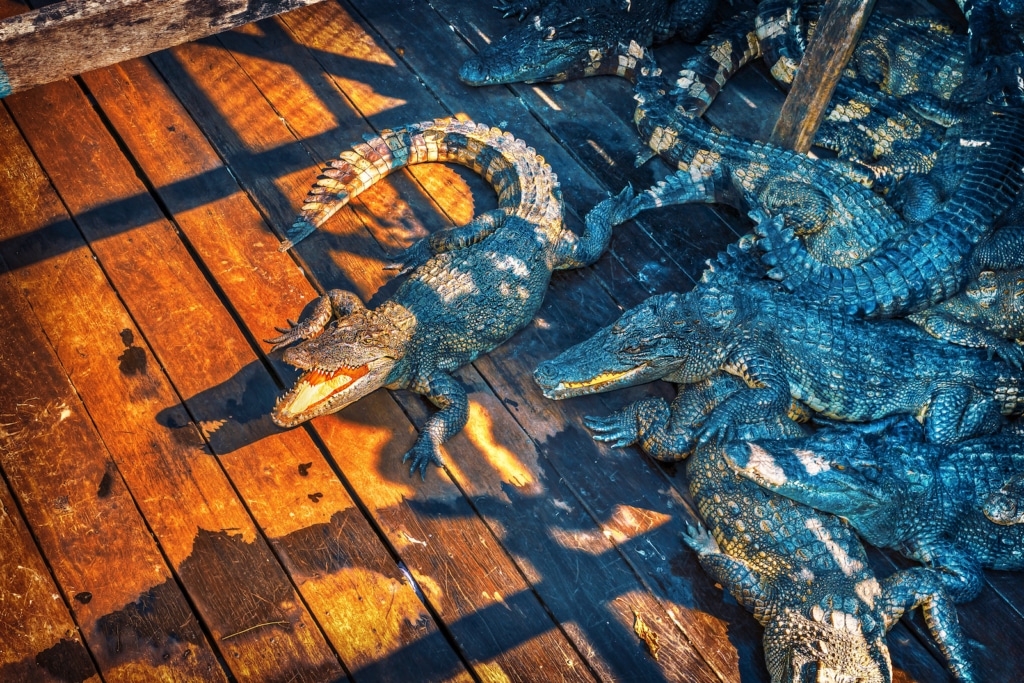
Legends
The Tonle Sap Lake lies on a northwest–southeast geological fault line and was created when the Cambodian platform subsided around 5700 years ago, long before the Great Pyramid was built! There is no doubt that the Tonle Sap area flourished in the time of the Khmer empire in the 9th century, when the world famous Angkor complex was built nearby and Hinduism was it its zenith in Cambodia.
The fishermen who know the lake intimately talk about a sunken road at the bottom of the lake, crossing from Siem Reap to the opposite shore. Many believe that the road was built by the monkey god Hanuman from the Hindu epic, The Ramayana. Others believe in an even older story of the Ancients who built it long before Angkor Wat!
In 2004, when an unusually dry season had lowered the lake level to just about 2 feet, a group of six fishermen working for a fishery supported by the Food and Agriculture Organization set out with the project's mapping specialist in search of this mythical ancient road.
After several hours of probing the lake bottom with sticks, they hit stone! They found a stone road, now under 12 inches of mud covered by another 16 inches of water. This was it, the stuff of legends!
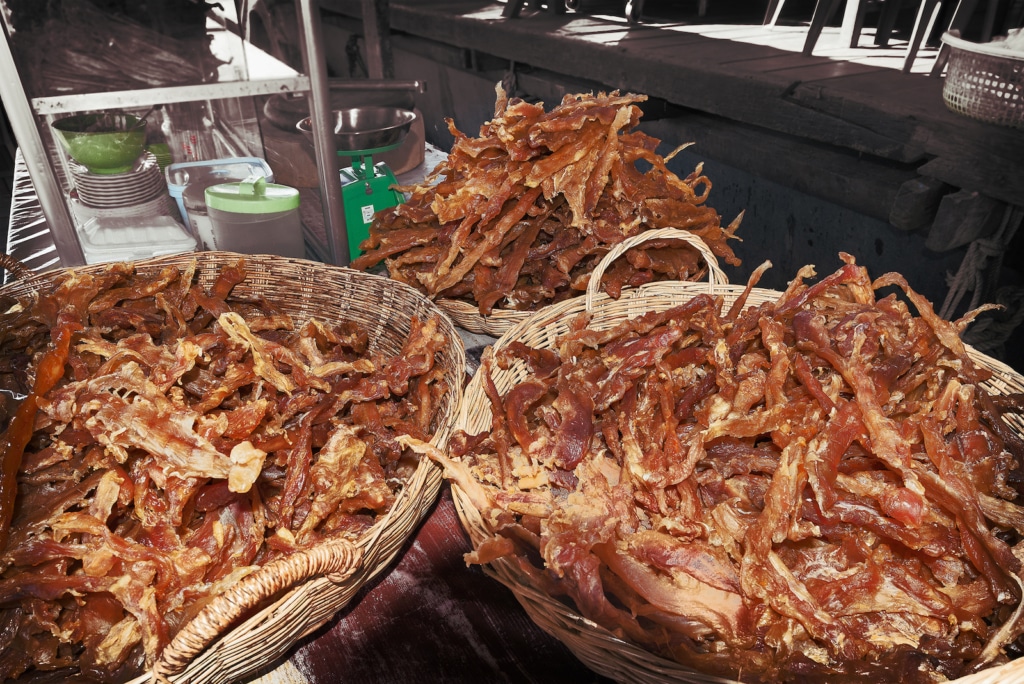
The road was approximately 10 meters wide and ran in an east-west direction. The fishermen could follow the road for over 600 meters. They carried back pieces of the ancient road as evidence. It is a type of stone they claim to have never seen before!
It is possible that a major flood many thousand years ago pushed a large amount of small stones and debris along a river-channel crossing in what is now the bottom of the Tonle Sap. The debris flowed over a bed of shells and became rock-hard, baked in the sun. Later, when the lake flooded, it disappeared under water. While this story is perhaps the true one, it misses the thrill and mystery of the fables of the Monkey God and the Ancients!

